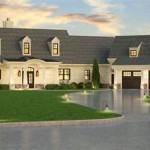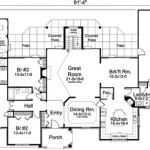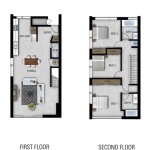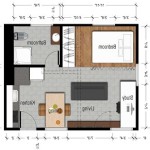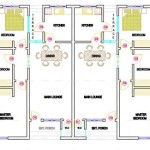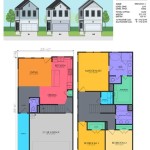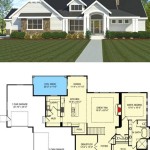3-Story Mixed-Use Building Plans: A Comprehensive Overview
Mixed-use buildings represent a popular and increasingly vital form of urban development. These structures combine residential, commercial, and sometimes light industrial spaces within a single building, creating vibrant, self-sufficient communities. A three-story mixed-use building offers a balance between density and scale, making it suitable for a diverse range of locations, from revitalizing downtown areas to enhancing suburban commercial corridors. This article will explore the key considerations, planning stages, and essential elements involved in developing successful 3-story mixed-use building plans.
The concept of mixed-use development is rooted in the principles of new urbanism, which emphasizes walkable, transit-oriented communities with a diverse range of amenities and housing options. By integrating different land uses within a single building, mixed-use developments can reduce reliance on automobiles, promote social interaction, and create a more dynamic and engaging urban environment. The three-story format provides a comfortable height that integrates well into many existing neighborhoods while still offering enough vertical space to accommodate a variety of uses.
Key Point 1: Planning and Zoning Considerations
Before embarking on any architectural design for a 3-story mixed-use building, a thorough understanding of local planning and zoning regulations is paramount. Zoning ordinances dictate the permitted land uses, building height restrictions, setback requirements, parking standards, and other crucial aspects of development. It is essential to consult with local planning officials and zoning administrators to determine the feasibility of the project and identify any potential challenges or restrictions.
Zoning codes often specify permitted uses based on zoning districts. Mixed-use districts are specifically designed to accommodate a combination of residential and commercial activities. However, even within these districts, specific regulations may apply regarding the types of businesses allowed and the proportion of space allocated to each use. For example, a zoning ordinance might stipulate that the ground floor must be reserved for retail or commercial uses, while the upper floors can be used for residential apartments or office space.
Parking requirements are another critical consideration. Zoning codes typically require developers to provide a minimum number of parking spaces based on the size and type of businesses and residential units in the building. These requirements can significantly impact the building's design and overall cost. Innovative parking solutions, such as shared parking arrangements or the incorporation of parking garages, may be necessary to meet parking standards while maximizing the building's usable space. Furthermore, proximity to public transportation may allow for reduced parking requirements, depending on local regulations.
Beyond zoning, other planning considerations may include historic preservation guidelines, environmental regulations, and community design standards. If the project is located in a historic district, additional approvals may be required to ensure that the building's design is compatible with the surrounding historical context. Environmental regulations may address issues such as stormwater management, drainage, and tree preservation. Community design standards may dictate the overall aesthetic appearance of the building, including its facade materials, landscaping, and signage.
Community engagement is also a vital part of the planning process. Developers should proactively engage with local residents, business owners, and community groups to gather feedback and address any concerns about the project. Holding public meetings, conducting surveys, and establishing open lines of communication can help build support for the project and ensure that it aligns with the community's vision.
Key Point 2: Architectural Design and Structural Engineering
The architectural design of a 3-story mixed-use building must effectively integrate the diverse uses within the structure while creating an aesthetically pleasing and functional space. The building's design should consider the needs of both residents and commercial tenants, providing separate entrances, adequate sound insulation, and appropriate levels of privacy. The architectural style should also be compatible with the surrounding neighborhood, enhancing the area's overall character.
A key design consideration is the vertical arrangement of uses. Typically, the ground floor is reserved for retail or commercial spaces, providing direct access to the street and creating a vibrant pedestrian environment. The upper floors are typically used for residential apartments or office spaces, offering a quieter and more private setting. Careful consideration should be given to the placement of elevators and stairwells to provide convenient access to all floors.
The building's facade should be designed to be both visually আকর্ষণীয় and energy-efficient. The choice of facade materials should consider the local climate, the building's historical context, and the desired aesthetic appearance. Common facade materials include brick, stone, stucco, and glass. Energy-efficient windows and insulation can help reduce heating and cooling costs and improve the building's overall sustainability.
Structural engineering is a critical aspect of the building's design, ensuring that the structure can withstand the anticipated loads and environmental conditions. The structural system must be designed to support the weight of the building, the weight of its occupants and contents, and the forces of wind and earthquakes. Common structural systems for 3-story buildings include wood framing, steel framing, and reinforced concrete. The choice of structural system will depend on factors such as the building's size, shape, and location.
Accessibility is another vital design consideration. The building must be designed to comply with the Americans with Disabilities Act (ADA), ensuring that all areas are accessible to people with disabilities. This includes providing accessible entrances, ramps, elevators, and restrooms. Careful attention should also be given to the design of doorways, hallways, and other circulation spaces to ensure that they are wide enough to accommodate wheelchairs and other mobility devices.
Key Point 3: Interior Layout and Space Planning
The interior layout and space planning of a 3-story mixed-use building must be carefully designed to maximize functionality, efficiency, and user comfort. The layout should consider the specific needs of both residents and commercial tenants, providing appropriate space for each use and ensuring that the different uses are compatible with one another. The interior design should also reflect the building's overall aesthetic style, creating a cohesive and inviting environment.
For residential units, the layout should prioritize privacy, comfort, and natural light. Apartments should be designed to maximize living space and provide adequate storage. Kitchens and bathrooms should be equipped with modern appliances and fixtures. Large windows can bring in natural light and provide views of the surrounding neighborhood. Sound insulation between units is essential to minimize noise transmission and ensure privacy.
Commercial spaces should be designed to be flexible and adaptable to a variety of uses. The layout should consider the specific needs of different types of businesses, providing appropriate space for retail displays, offices, and customer service areas. Adequate power and data connectivity should be provided to support modern business operations. The interior design should be consistent with the business's brand identity and create a welcoming and professional atmosphere.
Common areas, such as lobbies, hallways, and stairwells, should be designed to be both functional and aesthetically pleasing. These spaces should be well-lit and well-maintained, creating a positive first impression for visitors and residents. The design should also consider the needs of people with disabilities, providing accessible routes and amenities.
Sustainable design principles should be incorporated into the interior layout and space planning process. This includes using energy-efficient lighting and appliances, selecting sustainable materials, and maximizing natural light and ventilation. Water-efficient fixtures and landscaping can help reduce water consumption. The building should also be designed to promote indoor air quality, using low-VOC paints and finishes and providing adequate ventilation.
Fire safety is a critical consideration in the interior design of a mixed-use building. The building must be designed to comply with local fire codes, including the installation of smoke detectors, fire sprinklers, and fire-resistant materials. Emergency exits should be clearly marked and easily accessible. Fire drills should be conducted regularly to ensure that residents and tenants are familiar with the building's fire safety procedures.
Ultimately, successful 3-story mixed-use building plans require a collaborative effort between architects, engineers, planners, and the community. By carefully considering the planning and zoning regulations, architectural design, structural engineering, interior layout, and sustainability principles, developers can create vibrant and successful mixed-use buildings that enhance the quality of life in their communities.

Nicely Done Mixed Use Infill Proposed On Grant Street Buffalo Rising

3 Story Mixed Use Development Anchored By 1933 Lounge Proposed East Of Carmel S Na Design Center Cur Publishing

12 Unit 3 Story Apartment Building With 1300 To 1370 Sq Ft 2 Bedroom Units 83141dc Architectural Designs House Plans

Modern 3 Y Commercial Building Design

See Plans For 3 Story Mixed Use Development Proposed In Ann Arbor Mlive Com

73 Unit Apartment Complex Planned For Citizen Patriot Building With New 3 Story Addition Jtv Jackson

New 3 Story Mixed Use Building Planned In Valley Junction Business Record

The Owners Of Red Dot In Wauwatosa Plan To Redevelop Site

Sawall Development Three Story Mixed Use Building Planned For Downtown Sussex

Building Designs By Stockton Plan 12 9604 3 2

